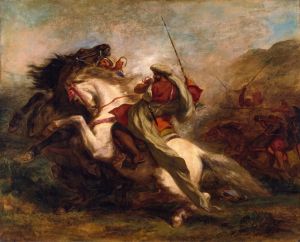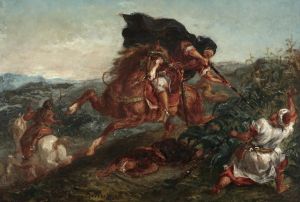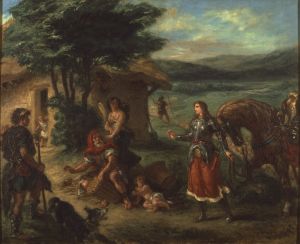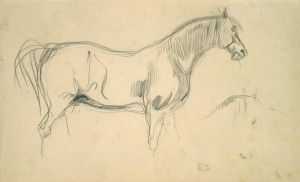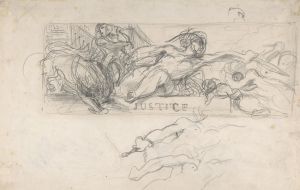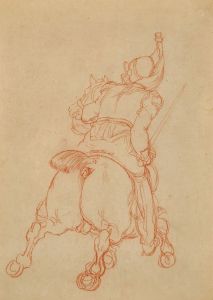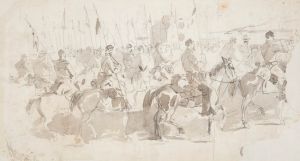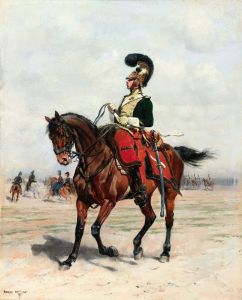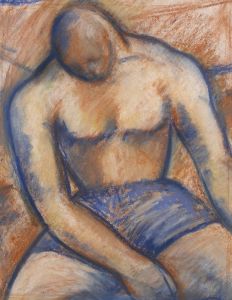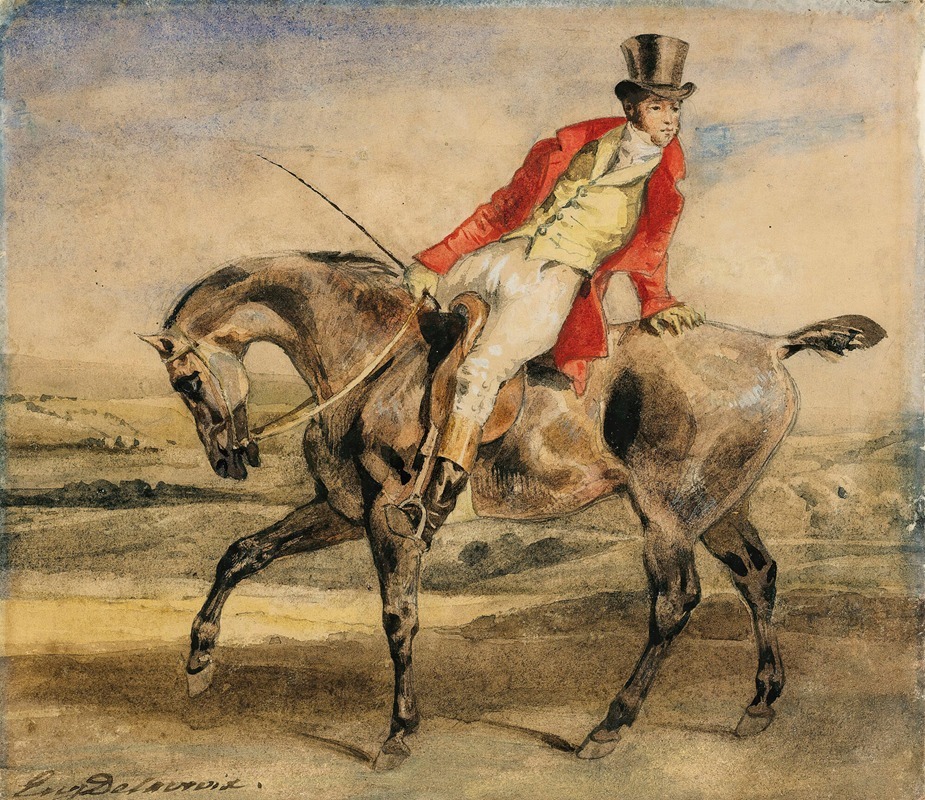
Horseman wearing a red jacket
A hand-painted replica of Eugène Delacroix’s masterpiece Horseman wearing a red jacket, meticulously crafted by professional artists to capture the true essence of the original. Each piece is created with museum-quality canvas and rare mineral pigments, carefully painted by experienced artists with delicate brushstrokes and rich, layered colors to perfectly recreate the texture of the original artwork. Unlike machine-printed reproductions, this hand-painted version brings the painting to life, infused with the artist’s emotions and skill in every stroke. Whether for personal collection or home decoration, it instantly elevates the artistic atmosphere of any space.
Eugène Delacroix, a leading figure of the French Romantic movement, is renowned for his vibrant use of color and expressive brushwork. One of his lesser-known works, "Horseman Wearing a Red Jacket," exemplifies his fascination with dynamic movement and vivid imagery. Although there is limited information available specifically about this painting, it can be appreciated within the broader context of Delacroix's oeuvre and the artistic trends of his time.
Delacroix was born on April 26, 1798, in Charenton-Saint-Maurice, France. He gained prominence in the 1820s and 1830s, a period marked by a shift from the Neoclassical style, characterized by order and restraint, to Romanticism, which emphasized emotion, individualism, and the sublime aspects of nature. Delacroix's work often depicted dramatic historical events, exotic subjects, and scenes of intense emotion, all rendered with a bold palette and dynamic compositions.
"Horseman Wearing a Red Jacket" reflects Delacroix's interest in equestrian themes, which he explored throughout his career. Horses frequently appear in his paintings, symbolizing power, freedom, and the untamed forces of nature. Delacroix was known to have been inspired by the works of earlier masters such as Peter Paul Rubens and Théodore Géricault, both of whom also depicted horses with great energy and vitality.
In this painting, the central figure is a horseman clad in a striking red jacket, a detail that immediately draws the viewer's attention. The use of red, a color often associated with passion and intensity, is a hallmark of Delacroix's style. The horseman is depicted in motion, capturing a moment of dynamic action that is characteristic of Delacroix's ability to convey movement and emotion.
Delacroix's technique involved loose, expressive brushstrokes that allowed him to capture the essence of his subjects rather than focusing on meticulous detail. This approach can be seen in "Horseman Wearing a Red Jacket," where the fluidity of the brushwork contributes to the sense of movement and vitality. The background is typically less defined, serving to highlight the central figure and enhance the overall dramatic effect.
The painting also reflects Delacroix's interest in Orientalism, a trend in 19th-century European art that depicted the cultures and peoples of the Middle East and North Africa. Delacroix traveled to Morocco in 1832, a journey that profoundly influenced his work. Although "Horseman Wearing a Red Jacket" does not explicitly depict an Orientalist scene, the exoticism and romanticism associated with such themes are evident in the painting's dynamic composition and vibrant color scheme.
Delacroix's influence on subsequent generations of artists was significant. His innovative use of color and expressive technique paved the way for later movements such as Impressionism and Post-Impressionism. Artists like Vincent van Gogh and Paul Cézanne admired Delacroix's work, and his impact can be seen in their bold use of color and exploration of emotional depth.
While "Horseman Wearing a Red Jacket" may not be as widely recognized as some of Delacroix's other masterpieces, it remains an important example of his artistic vision and contribution to the Romantic movement. Through his dynamic compositions and vibrant use of color, Delacroix captured the spirit of his time and left a lasting legacy in the history of art.






